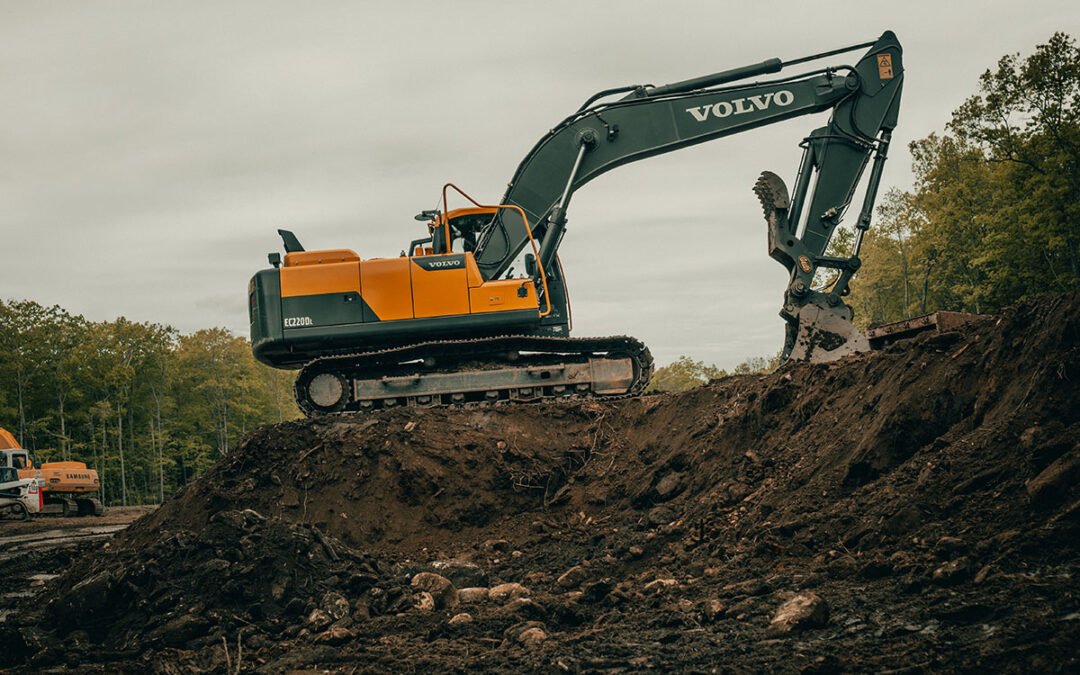Any time that there is a project that requires any kind of excavation, there are tons of serious issues that you could run into. Whether it be hard rocky soil or dangerous utilities and other underground obstructions, digging without checking to see what is below the surface can be like a game of Russian roulette.
How Ground-Penetrating Radar is Different than Call Before You Dig
Thankfully there are a few ways that you can check into what is happening underneath your future project before you start digging. This can save you thousands of dollars in fines, labor, and in some cases, lives.
The Dangers Of Digging
There are so many potential hazards that you can run into when breaking ground on a new project. Many electrical lines are run underground and can pose danger. In addition to electrical, other utilities such as gas and sewer lines are almost always buried. Digging without knowing where these lines are can pose dangerous consequences such as:
- Serious death or injury. Hitting a gas or electrical line could be catastrophic under the right circumstances.
- Loss of service due to damage to utilities.
- Legal action from utility companies.
- Expensive repair fees from utility companies.
None of these things sound fun, and luckily they can be avoided. The two main options that are available to ensure that you are digging safely are Call Before You Dig and Ground-Penetrating Radar.
What Is Call Before You Dig
Surely you have seen the 811 – Call Before You Dig campaign put out by the Common Ground Alliance. This service is a national service that works in conjunction with utility contractors to find the approximate location of buried utilities.
Once 811 is called, a local utility company is dispatched to search for and mark your underground utility lines, pipes, and cables with paint or flags so that you know approximately where they are located. In most states, you should wait at least 72 hours after calling before beginning to dig.
Call before you dig services typically use information from surveys and give you a decent idea of where a utility line is (typically with a 4’ tolerance); however, their information is not as accurate as some projects may need.
Ground Penetrating Radar
Enter GPR or Ground-Penetrating Radar. GPR is a modern-day method for finding out what exactly is below the surface. GPR sends pulses of energy into the ground and records the strength and time required for the return of any signal that is reflected.
Different materials reflect differently, which can help with recognizing what exactly is underground when performing a scan. Eventually, data from these scans are processed by specialized software, which produces an “image” of what is going on underneath the scanned area.
Advantages and Applications Of GPR
Ground-penetrating radar technology has progressed in leaps and bounds over the last several decades. It is extremely accurate, allowing crews to pinpoint the exact location of underground utilities without digging or relying on information from surveys. In addition to finding utilities, GPR is frequently used to detect a variety of materials, including:
- Metals
- Plastics
- Concrete
- Changes in geological features
- Air pockets in the soil
- Other ground disturbances
Because it can detect a myriad of materials, its applications are endless. Aside from the obvious usage of hunting down utility lines, it is also used for structural assessments of materials such as concrete. Archeologists and even law enforcement both use GPR to assist in their investigations.
From a practical standpoint, GPR’s approach provides several advantages over call-before-you-dig services such as:
- It is non-destructive and safe to use in public places
- Data collection is quick and easy, making it great for working in large areas
- Data is accurate, with detailed information about dimensions, depth, location, and type of material.
- Data can be interpreted in real-time.
- Scans are lower in price and take less time than other methods.
SitRep Utility Locating
Crossing an electrical or gas line when renovating your home or growing your business is the last thing you want to do. In this case, SitRep has got you covered. The 811 services notify public utilities to identify their service lines from “meter to main,” but you’ll likely need more information to do your job successfully.
Understanding what is beneath the ground is essential before beginning any project, whether it is the construction of your house, the rebuilding of a city block, the expansion of your company’s campus, the addition of a structure, the installation of a fence, or anything else. Accidental contact with a subterranean item, such as a water main, cable, or wire, may result in expensive and time-consuming repairs.
SitRep is the finest resource for finding utilities everywhere in the US, from Atlanta to Alabama and Greenville to Tennessee. We respond quickly inside Atlanta and the surrounding suburbs, usually within one to three days. To schedule your scan, please get in touch with us today!


Recent Comments